This article was medically reviewed by Troy A. Miles, MD and by wikiHow staff writer, Dan Hickey. Dr. Miles is an Orthopedic Surgeon specializing in Adult Joint Reconstruction in California. He received his MD from the Albert Einstein College of Medicine in 2010, followed by a residency at the Oregon Health & Science University and fellowship at the University of California, Davis. He is a Diplomat of the American Board of Orthopaedic Surgery and is a member of the American Association of Hip and Knee Surgeons, American Orthopaedic Association, American Association of Orthopaedic Surgery, and the North Pacific Orthopaedic Society.
There are 14 references cited in this article, which can be found at the bottom of the page.
wikiHow marks an article as reader-approved once it receives enough positive feedback. In this case, 100% of readers who voted found the article helpful, earning it our reader-approved status.
This article has been viewed 317,706 times.
Peripheral neuropathy is a complex condition with a variety of causes and symptoms, so how can you tell if that tingling in your toe is just a passing feeling or a hint to go see a doctor? A medical professional can diagnose foot neuropathy, but the risk factors and symptoms are easy to see for yourself when you know what to look for. In this article, we’ll walk you through all of the symptoms of foot neuropathy, as well as guide you through the diagnosis and treatment processes to give you the full scope of the condition. If you’re ready to take a step toward managing your health with confidence, read on!
Things You Should Know
- Look for common neuropathic symptoms like dulled feeling, tingling or burning, sharp pain, or thick and discolored toenails.
- If you’re diabetic, check your feet daily for injuries you may not have felt due to lowered sensitivity. Have a doctor examine your feet once a year.
- See your doctor if you notice any neuropathy symptoms. Pain medication and physical therapy can improve symptoms and encourage better nerve health.
Steps
Expert Q&A
-
QuestionI did bloodwork and I don't have diabetes, at night I get a burning sensation that keeps me from going to sleep. What should I do next?
 Mark Ziats, MD, PhDDr. Mark Ziats is an Internal Medicine Physician, Scientist, Entrepreneur, and the Medical Director of xBiotech. With over five years of experience, he specializes in biotechnology, genomics, and medical devices. He earned a Doctor of Medicine degree from Baylor College of Medicine, a Ph.D. in Genetics from the University of Cambridge, and a BS in Biochemistry and Chemistry from Clemson University. He also completed the INNoVATE Program in Biotechnology Entrepreneurship at The Johns Hopkins University - Carey Business School. Dr. Ziats is board certified by the American Board of Internal Medicine.
Mark Ziats, MD, PhDDr. Mark Ziats is an Internal Medicine Physician, Scientist, Entrepreneur, and the Medical Director of xBiotech. With over five years of experience, he specializes in biotechnology, genomics, and medical devices. He earned a Doctor of Medicine degree from Baylor College of Medicine, a Ph.D. in Genetics from the University of Cambridge, and a BS in Biochemistry and Chemistry from Clemson University. He also completed the INNoVATE Program in Biotechnology Entrepreneurship at The Johns Hopkins University - Carey Business School. Dr. Ziats is board certified by the American Board of Internal Medicine.
Internal Medicine Physician Go see your primary care doctor. He may refer you to a neurologist or be able to make a diagnosis himself.
Go see your primary care doctor. He may refer you to a neurologist or be able to make a diagnosis himself.
Warnings
- See a doctor as soon as possible after noticing neuropathy symptoms. Swift treatment and symptom management is the best way to keep it under control.[24]⧼thumbs_response⧽
- Untreated neuropathy can result in burns, cuts, infections, and falls because of the lack of feeling in your feet. Check your feet regularly for injuries.[25]⧼thumbs_response⧽
- In the most severe, untreated cases, ulcers or infections can spread to the entire foot. In these cases, amputation is considered to keep the infection from spreading further.[26]⧼thumbs_response⧽
References
- ↑ https://medlineplus.gov/peripheralnervedisorders.html
- ↑ https://www.diabetes.org.uk/guide-to-diabetes/complications/nerves_neuropathy
- ↑ https://www.foundationforpn.org/symptoms/
- ↑ https://www.foundationforpn.org/symptoms/
- ↑ https://www.foundationforpn.org/symptoms/
- ↑ https://www.cdc.gov/diabetes/library/features/healthy-feet.html
- ↑ https://my.clevelandclinic.org/health/diseases/17169-foot-and-toe-ulcers
- ↑ https://www.neurosurgery.columbia.edu/patient-care/conditions/peripheral-nerve-disorders
- ↑ https://www.niddk.nih.gov/health-information/diabetes/overview/preventing-problems/nerve-damage-diabetic-neuropathies/peripheral-neuropathy
- ↑ https://medlineplus.gov/ency/article/000593.htm
- ↑ https://www.ninds.nih.gov/peripheral-neuropathy-fact-sheet
- ↑ https://medlineplus.gov/ency/article/000593.htm
- ↑ https://medlineplus.gov/ency/article/000593.htm
- ↑ https://www.niddk.nih.gov/health-information/diabetes/overview/preventing-problems/nerve-damage-diabetic-neuropathies/peripheral-neuropathy
- ↑ https://www.spine.org/KnowYourBack/Treatments/Assessment-Tools/Specialized-Nerve-Tests
- ↑ https://www.ninds.nih.gov/peripheral-neuropathy-fact-sheet
- ↑ https://www.niddk.nih.gov/health-information/diabetes/overview/preventing-problems/nerve-damage-diabetic-neuropathies/peripheral-neuropathy
- ↑ https://www.niddk.nih.gov/health-information/diabetes/overview/preventing-problems/nerve-damage-diabetic-neuropathies/peripheral-neuropathy
- ↑ https://www.neurosurgery.columbia.edu/patient-care/conditions/peripheral-nerve-disorders
- ↑ https://www.neurosurgery.columbia.edu/patient-care/conditions/peripheral-nerve-disorders
- ↑ https://www.niddk.nih.gov/health-information/diabetes/overview/managing-diabetes
- ↑ https://www.diabetes.org.uk/guide-to-diabetes/complications/nerves_neuropathy
- ↑ https://nyulangone.org/conditions/peripheral-neuropathy/treatments/lifestyle-changes-for-peripheral-neuropathy
- ↑ https://www.ninds.nih.gov/peripheral-neuropathy-fact-sheet#3208_5
- ↑ https://www.cdc.gov/diabetes/library/features/healthy-feet.html
- ↑ https://www.diabetes.ca/managing-my-diabetes/preventing-complications/nerve-damage---amputation
About This Article
Neuropathy in your feet is caused by problems with the small nerve fibers of your feet. Common symptoms include pain or discomfort in your feet, difficulty walking, or feeling clumsy, which are all signs of motor nerve damage. Additionally, check your feet to see if your skin has become scaly or flaky and your toenails are more brittle, which could be caused by advanced damage to the nerves. You could also develop ulcers on your feet if you have neuropathy. If you think you do have neuropathy in your feet, see your doctor. For tips about how to test if your foot muscles are weak, keep reading.






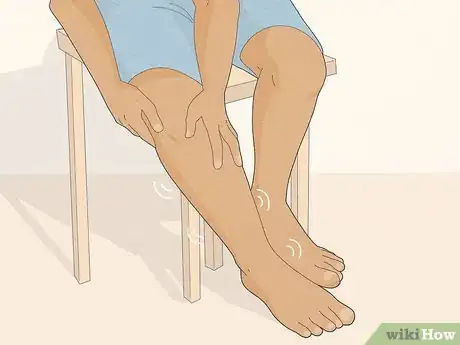


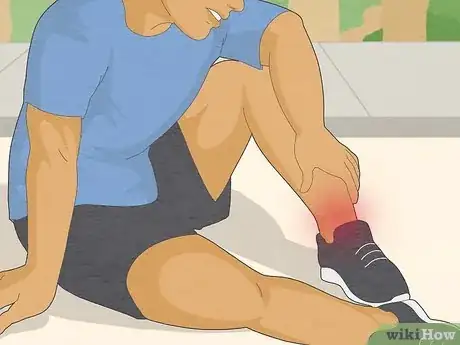

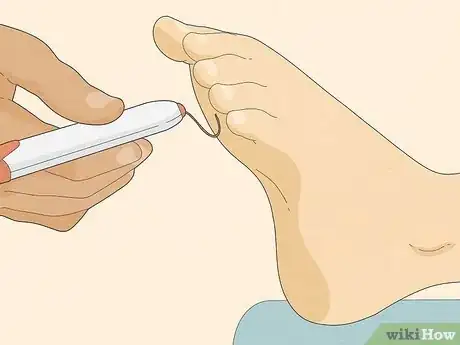

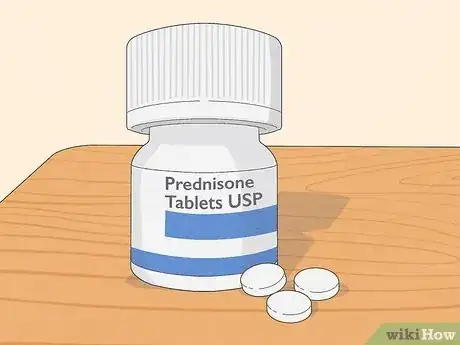


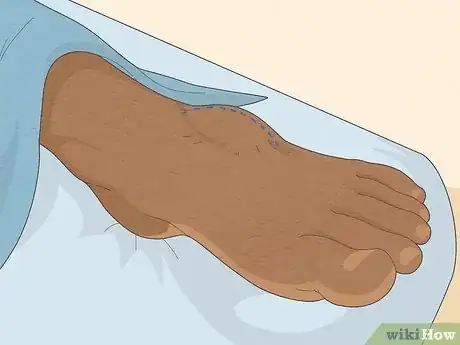



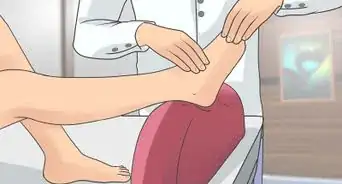

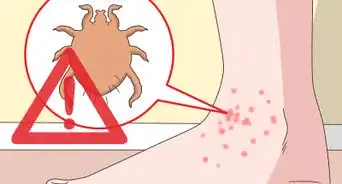





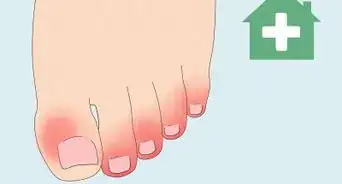















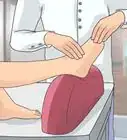

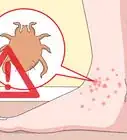




































Medical Disclaimer
The content of this article is not intended to be a substitute for professional medical advice, examination, diagnosis, or treatment. You should always contact your doctor or other qualified healthcare professional before starting, changing, or stopping any kind of health treatment.
Read More...